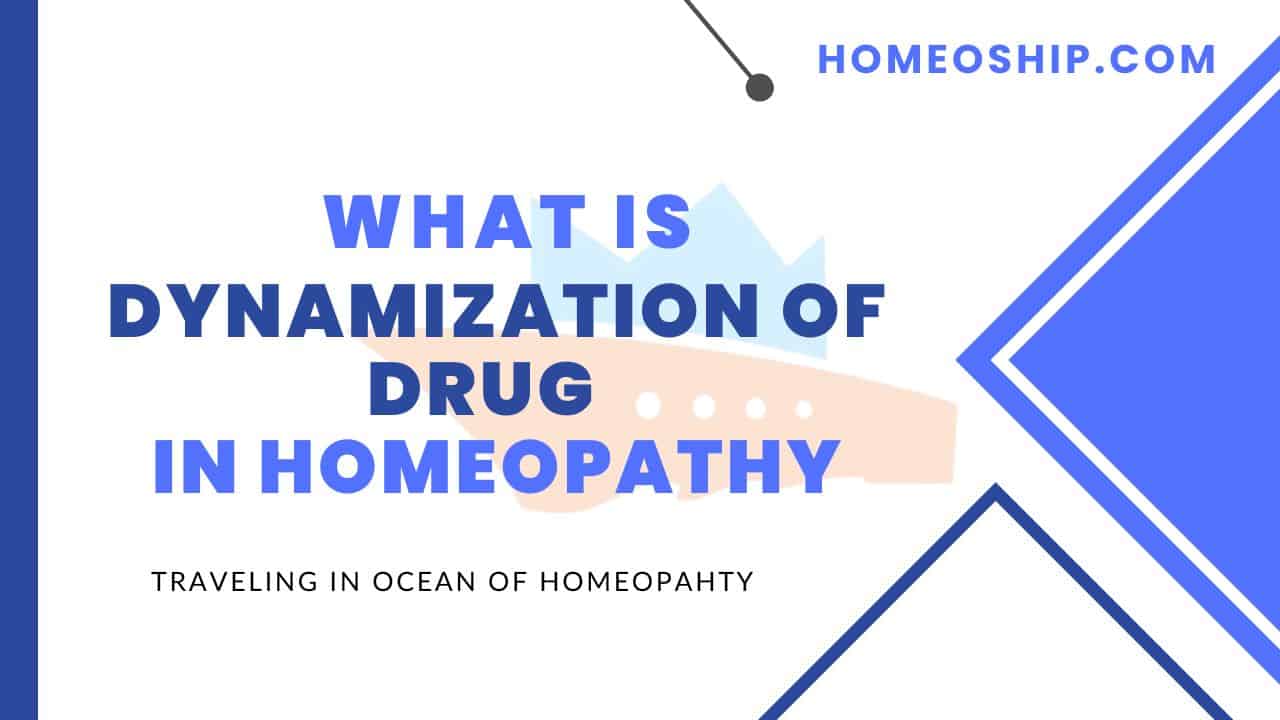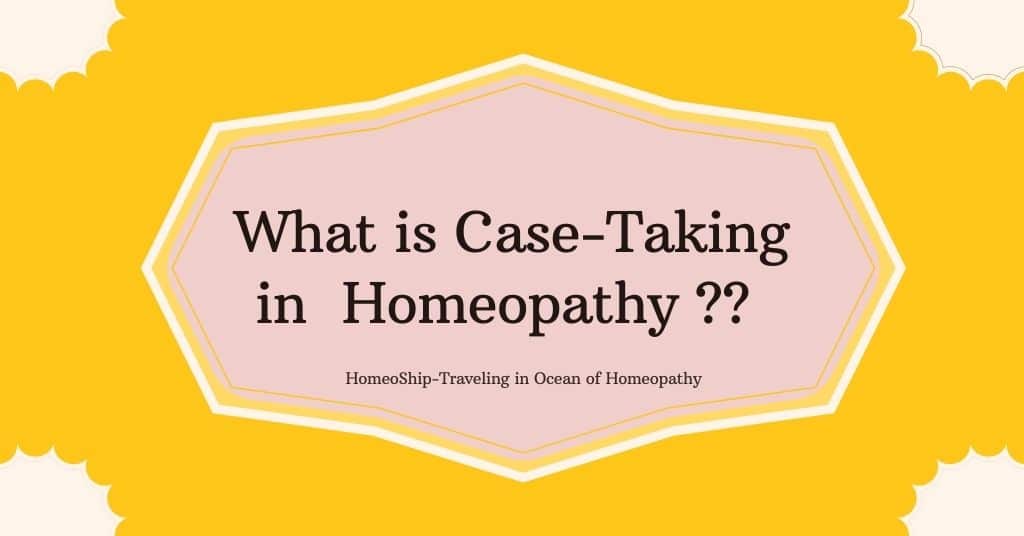Contents
Dynamisation is a process of developing the inherent or latent remedial powers of a crude drug to an incredible degree, which is unique to homoeopathy.
Master Hahnemann defines dynamisation as, “The mechanical action upon the smallest particles by means of rubbing and shaking and through the addition of an indifferent substance, dry or fluid are separated from each other”
Dr Stuart Close’s definition, “Homeopathic potentisation is a mathematico-mechanical process for the reduction according to the scale, of crude inert or poisonous medicinal substances to a state of physical solubility, physiological assimilability, and therapeutic activity and harmless, for use as homoeopathic healing remedies”.
Hahnemann’s Experiments on Dynamisation
The theory of dynamisation was first introduced into the 5th edition of Organon by Hahnemann. Even before the publication of the 5th edition, Hahnemann was experimenting and got convinced that the curative action of the drug in fact increases with the dilution. But he introduced this theory of dynamization only after thorough experimentation, just as he did with the other principles of homoeopathy.

This principle was criticized by both, the homoeopaths as well as the orthodox medicinal world. Most of the Hahnemannian followers termed this principle as a theoretical absurdity. But this is not an overnight fancy of Hahnemann, he made experiments with minimum doses possible even before this period of 1833. Since the year 1796 Hahnemann prescribed homoeopathic medicines in the regular crude form.
His experiments have shown that homoeopathic medicines in their crude form lead to a condition called aggravation, which gave unwanted suffering to the patient. In certain cases, this condition even prevented the curative process. This led him to think about the concept of dilutions. In the year 1796, Hahnemann was experimenting with the possibilities of homoeopathic cures with the smallest doses. To avoid unwanted aggravations he tried serial dilutions of medicines.
History shows that in the year 1812 itself, Hahnemann prescribed the drug Arnica in the 18th and Nux vomica in the 9th dilutions. With the discovery of trituration and potentisation, Hahnemann identified that some inert substances like common salt, charcoal, Lycopodium, Silicea, etc become efficient medicines only when triturated with sugar of milk. From such experiences, he started calling his medicines Dynamisations and not dilutions.
In the year 1826-27 in his book “Materia Medica Pura”, Hahnemann explained about the power of dynamisation. Homoeopathic medicines are not just mechanical dilutions of medicinal extracts, but they are the results of a systemic process of bringing out the inherent curative effects otherwise hidden in the crude substance.
Hahnemann explains in the footnote to § 269, “Only after this ball of steel is dynamised, rubbing it with a dull file in one direction, will it become a truly active powerful magnet, one able to attract iron and steel to itself and impart to another bar of steel by mere contact and even some distance away, magnetic power and this in a higher degree the more it has been rubbed. In the same way will, triturating a medicinal substance and shaking of its solution [dynamisation, potentisation] develop the medicinal powers hidden within and manifest them more and more or if one may say so, spiritualizes the material substance itself”.
By the year 1833, Hahnemann got thoroughly convinced of the efficacy of dynamised medicines and he introduced this doctrine of dynamisation for the first time in his 5th edition of Organon. The life-preserving force is dynamic in nature, the noxious forces are dynamic in nature and hence the disease-curing medicinal forces must also be dynamic in nature. This is because the action and reaction take place only between two similar forces of the same manifestations.
Controversy Over Dynamisation
The only cause why modern scientific medicine rejects homoeopathy is because of its theory of dynamisation. Even a group of homoeopaths rejected this theory of dynamism in its early days of introduction into Organon. They accepted it in the later years after verifying its superiority over crude medicines. Homoeopathic medicine does not contain any amount of materialistic medicinal substance in its highly attenuated form. The maximum possible potentisation which may contain the smallest molecule is up to 11th centesimal potency.
But homoeopaths all over the world believe that their medicines act better in the highly dynamised form. The modus operandi of dynamised homoeopathic medicines on the materialistic ground is difficult. Several homoeopaths like Dr O. Lesser, Dr Boyd and Dr C.E. Wheeler etc have made several attempts to explain the action of dynamic medicines on the grounds of scientific evidence.
Some practitioners have the idea that energy in nature can be stored in solid, liquid, gaseous and radioactive states. Homoeopathic medicines store their energy in radioactive states. But the highly diluted medicines also failed to fulfil these criteria. Existing knowledge of physics cannot explain the action of homoeopathic medicines in comparison with radioactive states. Dr Boyd experimented on dynamic medicines with an instrument called “emanometre”. This instrument can detect electromagnetic energy and also its intensity in different substances. His experiments with this instrument showed that different dynamised homoeopathic remedies contain different electromagnetic powers in different potencies. But research work on this topic is still in its infancy.
Dr J.H. Clarke in his book “Homeopathy explained”, introduces us to Darwin’s experiments with dilutions. He says, “I may refer to Darwin’s research with the fly-catching plant Drosera or sundew. Darwin found that solutions of certain salts of ammonia stimulated the glands of the tentacles and caused the latter to turn inwards. He made this solution more and more dilute but still, the plant was able to detect the presence of the salt. Darwin was almost frightened by his results.”
Clarke even says that Darwin was hesitant to publish his results because this experiment was against scientific belief. But this is well acceptable by homoeopaths because it is nothing but a dynamic effect of the solution that Darwin prepared.
Advantages of Dynamisation
1. Reduces and avoids unwanted homoeopathic aggravations and also helps in reducing the side effects produced by crude medicinal substances.
2. By this process the inherent curative properties of the inert substances can be brought out. Example: common salt, by the process of dynamisation, becomes a life-saving remedy Natrum Mur, charcoal by dynamisation becomes the important remedy of materia medica, Carbo veg.
3. Most virulent and poisonous substances can be converted into powerful medicines by the process of potentisation. For example, snake poisons like Lachesis, Naja, Crotalus horridus etc, and chemicals like Arsenicum album become wonderful remedies of materia medica.
4. Potentisation process makes the action of the remedy deeper, longer and more systematic.
5. The capacity of a drug substance to produce mental symptoms increases through the process of potentisation.
6. The homoeopathic cure takes place in the dynamic plane. The life-preserving force is dynamic in nature, the noxious forces are dynamic in nature and hence the disease-curing medicinal forces must also be dynamic in nature. 7.
Hahnemann recommends 2 methods of dynamisation of drugs:
i. Trituration: Suitable for the insoluble substances
ii. Succussion: Suitable to the soluble substances

Difference between Dilutions and Dynamisation
‘Dilution’ is “A process of weakening a substance”. The oxford advanced learner’s dictionary explains a dilute as “to make a liquid or colour thinner or weaker by adding water or another liquid”. Through the process of dilution, the strength of the medicine reduces. As long as one keeps on adding the neutral substance (vehicle) to the medicinal substance, it becomes less potent and becomes diluted and loses its toxic effect. It loses its capacity to alter the state of man’s health.
Hahnemann comments, “Dilutions, properly so-called, exist almost solely in objects of taste and colour. A solution of salty and bitter substances becomes continually more deprived of its taste the more water is added and eventually, it has hardly any taste, no matter how much it may be shaken. ….These are and continue to be real attenuations or dilutions, but no dynamization.”
Dynamization is a unique quality of homoeopathic medicines alone. In the case of dry medicinal substances, the trituration process and in the case of soluble substances succussion process is recommended by the master. A special mathematico-mechanical process like ‘Trituration’ and ‘Succussion’ is followed to convert an inert substance or a poisonous substance is converted into a potent medicine by calculated mechanical friction and the addition of a neutral vehicle.
Through the process of dynamization material quantity of a drug, the substance is reduced but its quality to produce its peculiar individualistic character increases. Because of this reason Hahnemann bits of advice to the homoeopath to call his medicines dynamization and not dilutions.
“Simple dilution for instance, the solution of a grain of salt will become water, the grain of salt will disappear in the dilution with much water and will never develop into medicinal salt, which by means of our well-prepared dynamization, is raised to most marvellous power,” says Hahnemann in the footnote to § 269.
“Homeopathic dynamization is processed by which the medicinal properties, which are latent in natural substance while their crude state, become aroused and then become unable to act in an almost spiritual manner of life, i.e. on our sensible and irritable fibre.
Hope you understand the importance the dynamisation/dynamization in homoeopathy, if you are facing any difficulty in understanding the topic you are free to comment below and get help from us at any time.




Simply desire to say your article is as surprising. The clearness in your post is simply excellent and i could assume you are an expert on this subject. Thanks a million and please carry on the gratifying work.
So kind of you!!